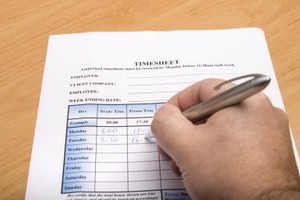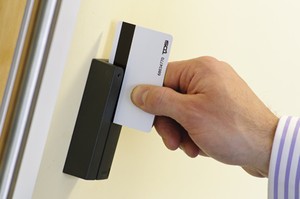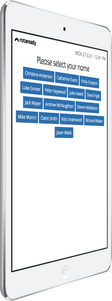Time & attendance (“T&A”) – capturing and processing staff clock ins and outs – has been one of our most in-demand features in recent months. In this article I’ll take you through the importance of getting T&A right, how we selected our approach, and why T&A’s real value lies in integration with the other facets of workforce management.
Why bother capturing T&A?
Monitoring the exact times staff come and go may seem draconian. But doing it properly will benefit your staff as well as your business. At a basic level, there are 2 key functions:
- Timesheets. Tracking how long someone’s been on shift is pretty critical for staff who are paid by the hour.
- HR processes. You need to know hours worked in order to track time-off-in-lieu (“TOIL”) balances and calculate accrued holiday.
We’ve met a number of businesses which rely on scheduled data (i.e. the hours on someone’s rota), rather than actual data (i.e. the exact amount of time they were on shift) for the above functions. Of course, different businesses have different requirements, but usually this approach will result in inaccuracies – with either the business or the staff being worse off than they should be.
What’s wrong with just using pen & paper?
Many businesses we speak to still capture T&A by relying on their staff to scribble in a book to sign in and out. So before I get started on what makes Rotaready’s T&A so great: what’s wrong with this approach?
- It turns into a hugely manual job. Scouring the pages to ensure everyone’s correctly signed in and out. Challenging the information to ensure it’s sensible. Inputting the data into a spreadsheet / payroll system. Reconciling. Adding holiday / sickness days. Calculating TOIL balances. Calculating accrued holiday. This all takes time.
- Risk of getting it wrong. As with any manual process, the chance of human error can never be fully eradicated. Mistakes with timesheets (and payroll) are costly.
- It’s open to abuse. There are only limited checks to ensure staff aren’t either: claiming to have arrived earlier or left later, or signing each other in and out (“buddy clocking”).
- No management information. Picking out trends in staff timeliness would be hugely laborious.
- Taking a chance with record keeping. As with all paper-based processes, what happens if you lose the documents?
Of course, some businesses are a few steps ahead, using spreadsheets or basic clocking-in machines, but they’ll fall short on at least one of the above points.
How does Rotaready’s T&A work?
In my first job, I was given a swipe card to use every day. In fact, there are loads of T&A options on the market, which authenticate (i.e. securely identify staff) in different ways. Swipe cards are the obvious example, but you’ll come across RFID badges, biometrics (typically fingerprint readers) or simply password / PIN-code driven solutions.
Clearly, these options are better than relying on paper / spreadsheets, but they have their own drawbacks. Swipe cards / RFID badges are an administrative overhead (distributing to new joiners, collecting for leavers, replacing lost ones, replacing / reconfiguring broken ones). Fingerprint readers typically have to be pretty expensive to be much good (and even then often don’t work accurately, especially for kitchen staff who can burn thumbs!)
Furthermore, there are scenarios where you’d want more than one set of hardware (e.g. if you typically have a large number of staff arriving / leaving at the same time or if you wanted, in a pub for example, your kitchen staff to clock in / out separately from your bar staff). Many systems out there won’t aggregate data from numerous devices.
On top of all that, buddy clocking isn’t eliminated. Passwords / PIN codes can be shared and fingerprint readers often allow several fingerprints to be registered against one account.
We wanted to find a solution that would address these issues and work across all industries (healthcare providers, for example, won’t have their staff on tills).
After months of planning, development and testing, we released Rotaready T&A. Staff clock in and out through a wall-mounted tablet, which takes a photo from the front-facing camera at each interaction. Easy, quick (and, in the advent of selfies, actually quite fun) to use. Inexpensive to deploy. No administrative overhead. Easily scalable if you need more than one. Buddy-clocking thwarted, simply by taking photos (we offer facial recognition as an optional extra for extra peace of mind).
All that’s needed is good lighting, a nearby plug and connectivity (wired or wireless). Problem solved.
Oh, and for scenarios where staff don’t work from a base office (e.g. healthcare visits), we support clocking in/out from a mobile device. More on that another time.
So what’s the game-changer?
There are loads of T&A providers out there. What makes Rotaready special?
One word: integration. Handling T&A alongside Rotaready’s other core modules of scheduling and staff management brings about a huge range of benefits.
- Real-time views. Side-by-side comparison of scheduled vs. actual. Instantly see who’s in and who’s late.
- Accuracy. Alerts if issues are detected in the data – e.g. if someone clocks in much earlier / later than they were scheduled to, or if they forgot to clock in / out.
- Smart timesheets. Factoring in holiday / sickness records. Bespoke sanitising to prepare for payroll (more on that another time).
- Improved budgeting. Picking out trends in overtime allows you to plan for, rather than be surprised by, longer hours.
- Automated HR processes. Automatically crediting (or debiting) TOIL, instantly accruing holiday (either for balances or for pay) and more.
- Management information. Monitor staff timeliness or even have it drive scheduling (i.e. more timely staff are prioritised).
The above benefits simply wouldn’t be possible with a standalone T&A system. Integration with the other facets of workforce management is where the real value lies.
How long do you spend managing all aspects of T&A? Let us know what you think.


